A good shot starts with a good base. Crystal Gauvin looks at how to achieve a solid, repeatable stance
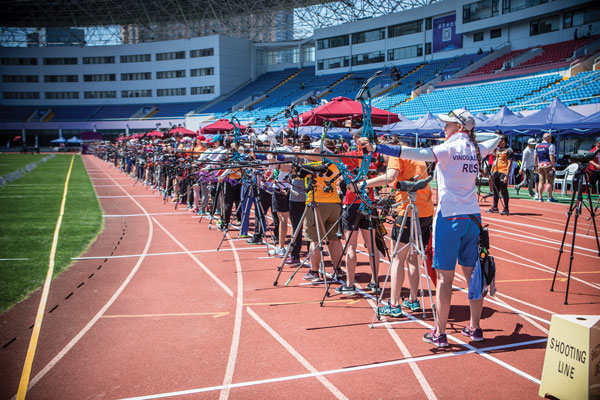
Pro Tip:
Make sure you try out any shoes you plan to wear in a competition BEFORE the tournament, to make sure they don’t cause a change in your balance or stance.
As archers, we spend a lot of time working on perfecting our form, but many times we forget a very important aspect: our stance, stability, and balance. If you look down the line at a World Cup, or any tournament with top archers, you will notice they all have a slightly varied stance, but the one thing they do have in common is they are very stable. They have good balance, and they appear almost anchored to the ground as they shoot each shot. This is one area that separates the average from the great, especially in windy conditions.
Stance
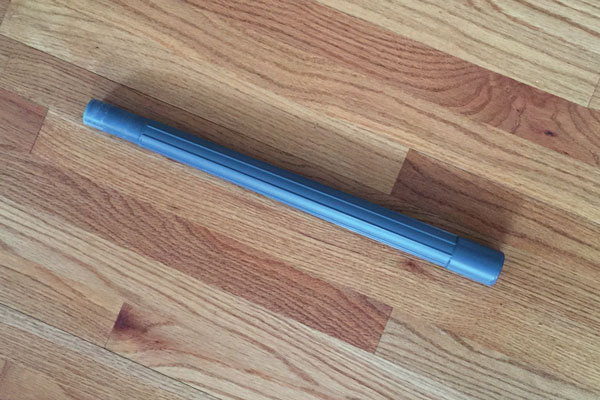
A rod, measuring stick or something similar can help you work on your stance consistency
Everyone wants to get their hands on a bow and shoot arrows, so an archer’s stance, the way their feet and body are aligned before even beginning the shot, is overlooked by many just starting out. However, a proper stance will make that process easier, whether shooting with a recurve or a compound bow. In fact, because your stance sets the foundation, it is one of the most important aspects of your shot and should never be ignored.
The easiest way to start practising your stance is with no bow in your hand. Find a place where there are tiles or the ground has marks on it for you to use as a reference. If you can’t find somewhere, put tape on the floor or simply lay down a broom, measuring stick, arrow or anything that will lie in a straight line.
This is now your shooting line.
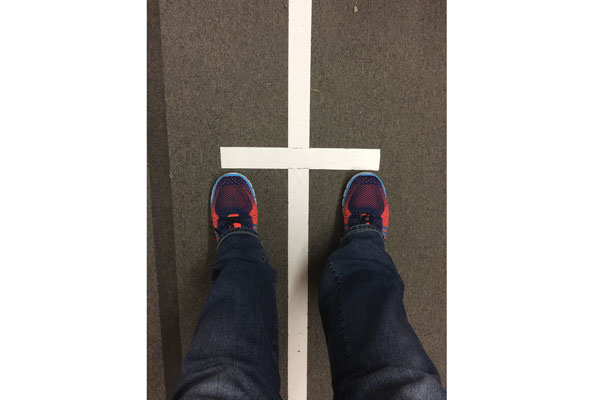
Stance 1: A closed stance sees your feet parallel to the shooting line, and is an easy place to start
Start by placing one foot on either side of your shooting line. Next, space your feet between shoulder and hip width apart. This will give you more stability than keeping your feet close together. Next, imagine a straight line going from your toes to the target. This is considered a straight or closed stance.
Over the years, many archers have moved to a more open stance. To do this, I recommend you rotate your feet about 30 degrees, so your back foot (right foot for right-handed shooters) is slightly ahead of this imaginary line. The best way to do this is to picture the balls of your back foot directly over this imaginary line.
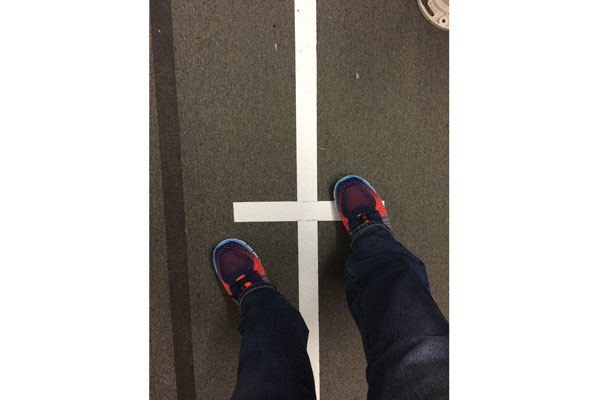
Stance 2: An open stance moves your target-side foot backwards and your back foot forwards
Your front foot (which will be your left foot for right-handed shooters), on the other hand, is slightly behind this imaginary line. Using an open stance keeps your waist open and aligns your shoulders to the target. This can give you more stability and control in making your shot. Whichever stance you choose (open or closed) it is important that it feels natural to you and is easily repeatable over time.
Next, the weight on your feet should be anywhere from 60 per cent on the balls of your feet and 40 per cent on your heels to 50/50. A great test to make sure you are properly balanced is to see if you can lift your toes without losing your balance. If you can, then you have too much weight on the heels of your feet. You also want to make sure you are wearing shoes that keep you from wanting to rock on the balls of your feet (or your heels).
Finally, the last piece of your stance: you should stand up tall, with your head looking at the target before you even begin to raise the bow.
Stability and Balance

Reo Wilde and Toja Ellison doing the one leg drill in Antalya
It may seem easy to set your feet and line up your body in an appropriate position, however you need a stable base in order to perfect your stance. This is where stability and balance come into the picture.
Balance is your ability to control your centre of gravity, while stability is your ability to control your body’s movements. A terrific way to understand the difference between the two and why they are both so important is to try these two drills.
First, try to shoot your bow while balancing on just one leg. You can go to one leg after you draw back your bow, or before if you like more of a challenge. Either way, you will quickly see why balance is a very important piece of the archery puzzle.
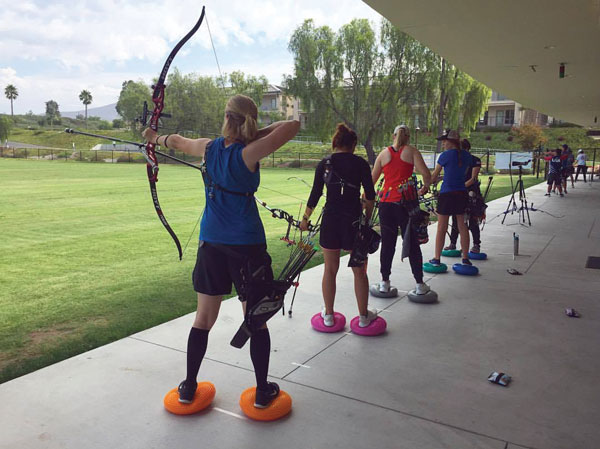
Balance discs are one way to help improve your shooting balance
Second, hold a laser pointer in one hand and point it at a target (or the wall) with your arm outstretched. Notice how much movement you see. Now, repeat this, but with a 10-pound weight in your hand alongside the pointer. You will quickly discover your arm loses stability, and there is increased movement in the light. So, as you can see, both balance and stability are necessary when trying to set yourself up for success on the archery field.
Although the setup of your stance is important (where to put your feet, and so on), your ability to execute a strong shot in all conditions comes down more to your ability to have good stability and balance. A solid core is needed for both stability and balance. This is why things like daily planks are an archer’s best friend (you can check out a previous article on archery exercises). Other drills that can be done to improve these two aspects of your shooting include sitting on stability balls while using a computer, standing on balance discs when shooting, core exercises, and holding drills.
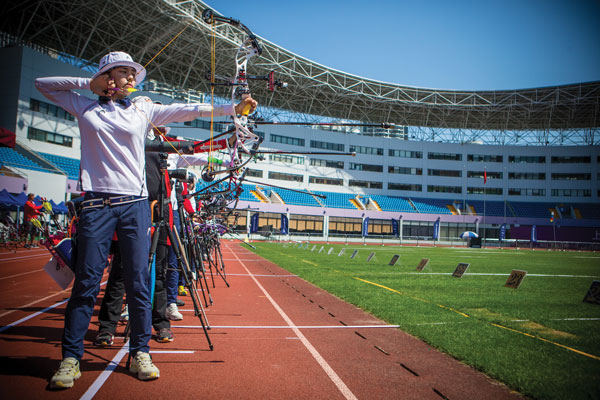
A good stance and stable shot separates the average from the good – especially in windy weather
Ultimately, archery is a sport that requires a stable platform, with coordination of the lower and upper bodies. The lower body stance is static, creating balance for the rest of the body, while the upper body is stabilising the movement of aiming and shooting. The centre of the body can change throughout the shot cycle, due to internal factors (such as having your weight on your toes, sight picture, and so on) or external factors (like the wind). If you are looking to increase your scores down range, one of the first things I’d recommend you check is your stance, stability, and balance.
This article originally appeared in the issue 121 of Bow International magazine. For more great content like this, subscribe today at our secure online store www.myfavouritemagazines.co.uk

